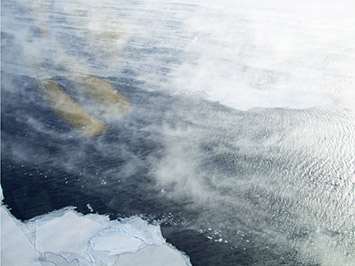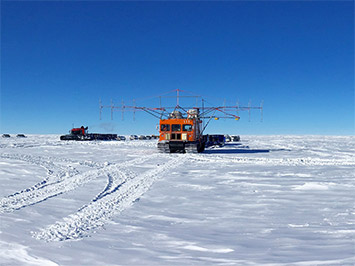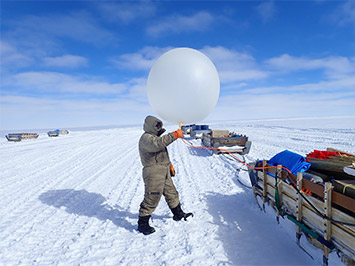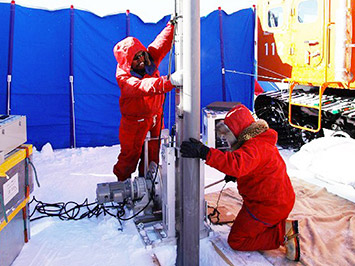National Institute of Polar Research
Polar Meteorology and Glaciology Group
Clarify the present, past, and future global environment conditions through polar research
Leader Shuji Fujita
In the Polar Meteorology and Glaciology (PMG) Group, our research fields include atmospheric science, meteorology, glaciology, sea ice/ocean sciences, and paleoclimatology. We study the past, present, and future conditions of the global environment and climate through studies on the polar atmosphere (troposphere, stratosphere), snow and ice, and the ocean. To this end, we conduct research on the many interrelated changes in the atmosphere, hydrosphere and cryosphere, mainly by conducting on-site observations, satellite remote sensing, and climate/ice sheet modeling. With the acceleration of global warming in recent years, the social and scientific roles of polar research have become extremely important.
Responding to many of society’s questions is a social demand. What roles do the Antarctic and the Arctic regions play in global climate and environment systems? How were the ice sheets on the Antarctic continent formed, and what boundary conditions and internal structures maintain these structures/features? The ice sheets in both polar regions are fragile and are melting at an increasing rate due to global warming, causing sea levels to rise. How will such melting proceed, and what impacts will this have on the global environment and human society? In addition, the history of climate change for the last one million years on Earth can be inferred from an archive called “ice cores”. Since the polar regions are areas far removed from sources of anthropogenic substances, we can elucidate changes in the Earth’s climate based on observations of these cores.
Studies to clarify the phenomena in the polar atmosphere and their mechanisms include research on the circulation and transport of atmospheric substances (e.g. aerosols, trace gases, and water) and radiation characteristics of polar aerosols and their interactions with clouds and climate. We are also investigating the radiation balance; conducting continuous observations of greenhouse gases, such as carbon dioxide and methane; and researching the heat and material cycles at the surface and in the upper-atmosphere through meteorological observations over extensive areas in both polar regions. In addition, we are investigating changes in atmospheric circulation over the Arctic and the effects that these changes have on mid-latitude weather.
Studies on the polar cryosphere using ice cores, which act as records of paleoenvironmental conditions, have clarified past global climatic and environmental changes. Ice cores are collected by drilling/boring ice sheets and glaciers in the polar regions of Antarctica and the Arctic, including Greenland. The oldest ice core that we have obtained to date is one that was drilled at Dome Fuji in Antarctica; the core covers the past 720,000 years. We aim to clarify paleoenvironmental conditions up to an age of more than one million years by future ice core drilling.
Furthermore, we are conducting research on the formation process, internal structure and flow of the ice sheets in Antarctica and Greenland, and the mass balance of the ice sheets. Melting at the margins of the ice sheets, collapse of ice shelves, changes in flow, and changes in mass balance are important factors that affect sea-level increases due to global warming, and there is a strong demand for understanding these changes in the polar regions.
We are conducting comprehensive interdisciplinary observations on the effects of changes in the Arctic cryosphere on global climate and environment through the atmosphere and ocean. Regarding the polar ocean, we are conducting research on the formation mechanisms of polynyas and Antarctic bottom water, sea ice growth/decline processes, and ocean structure/circulation characteristics. We are also investigating the effects of sea ice changes on the climate, the atmosphere over the polar ocean, and on ocean-atmosphere carbon dioxide exchange and ocean acidification.

Oceanography and Sea ice sciences

Glaciology and snow/ice sciences

Meteorology and Atmospheric sciences

Paleoclimatology








